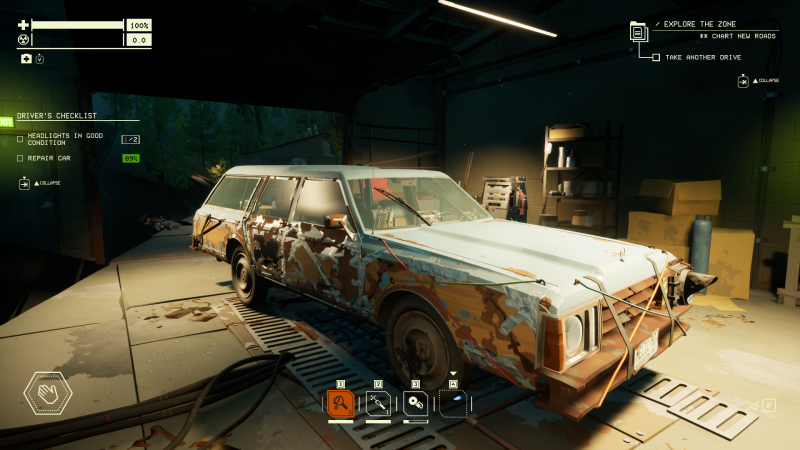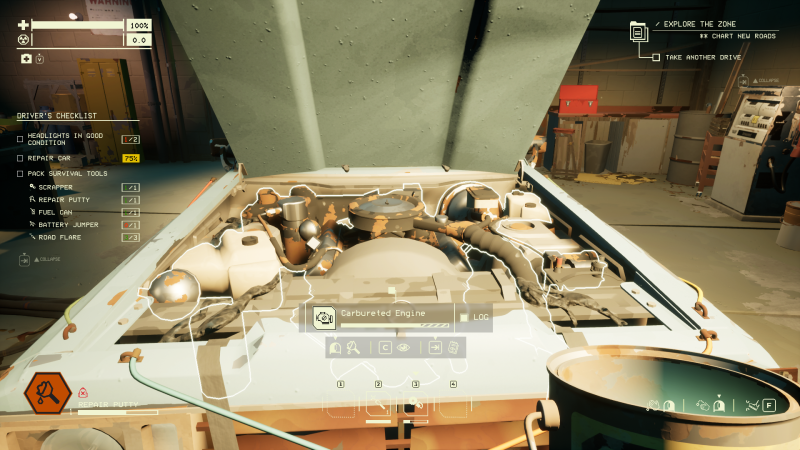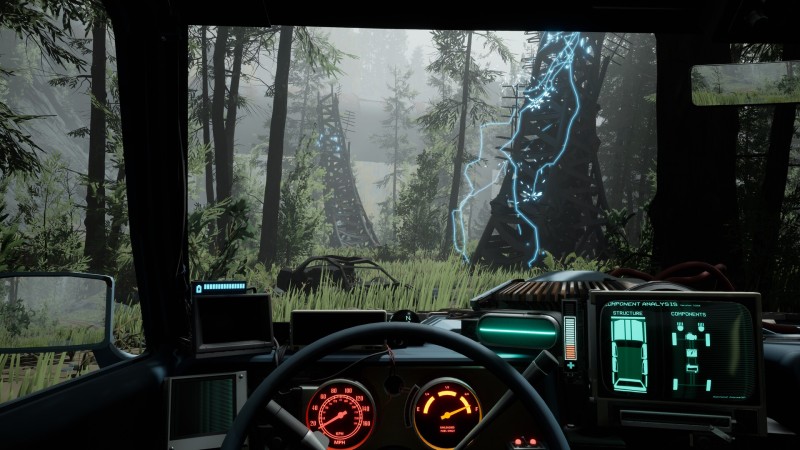Pacific Drive is a game about one’s relationship with their car. As you navigate a reality-bending doomsday loop, your vehicle is the only thing keeping you from impending death – if you’re good enough at driving it. I’ve had fun in this world speeding through the forest and grabbing glowing yellow orbs, but the car is one of the most interesting parts to me for one reason: I don’t have a driver’s license yet.
After years of procrastination and two expired temporary permits, I’ve finally started learning to drive in earnest. I spent years of adulthood in the dark, and it’s been fascinating to open my eyes to something that is an everyday experience for millions of people. And as much as it’s opened my eyes to a new side of the real world, it’s making me see video game driving in a different light, and Pacific Drive is the first instance of that.

For starters, you drive in first person, which is something I’ve never tried in a game before. I typically swap to a third-person perspective as quickly as possible because it gives me a better sense of what’s going on around me. The thing is, when I do that, I’m basically playing as the car, not the person driving the car. Mirrors are irrelevant when you have a camera floating around to get perspective, and all you need to do to start the engine is press the gas button.
In Pacific Drive, you play from the driver’s seat, and you have to familiarize yourself with the space. Starting the car is more than the tap of a button – you have to aim at the ignition and insert the key to start the engine, then aim at the gear shift to put the car from park into drive. You’re free to exit the car at will as well, but if you leave the car on, you’ll waste gas, and if you don’t put it in park, it will roll down a hill. While driving, you have to physically turn your character’s head to look in the mirrors to see what’s behind you – I just wish it had the backup camera in my partner’s Honda Accord.
I also have a more basic appreciation for the anatomy of a car. Granted, Pacific Drive does simplify things (I don’t need a license to know a hatchback trunk door and a driver’s side door don’t have the same crafting recipe in real life [or a crafting recipe at all, for that matter]), but by forcing me to repair and upgrade the car by looking at its individual parts, I have a deeper understanding than I otherwise would.

For example, an early goal has the player craft a handbrake. In order to actually put it in the car, you need to open the hood, at which point you can see a translucent image of where the handbrake will actually go once it’s in the car. Seeing it highlighted at the base of the vehicle with lines connecting to each wheel was a surprise to me, partially because I had never considered how a handbrake actually works and partially because I was impressed the developers took the steps to actually illustrate the entire mechanism. It would have been much easier to just have the handbrake exist as an upgrade on a menu, but seeing where it’s supposed to go and putting it there myself gave me ownership over the whole thing.
I’m not suggesting Pacific Drive is some kind of groundbreaking car simulator, but it is more of a car simulator than I thought it would be, and now that I’m learning to drive, I have a very real appreciation for the way the developers spent time to add some realism to the car and its upgrades. Going the (pun intended) extra mile in areas like this really makes Pacific Drive stand out, and it’s made me far more invested in the game – and my car – than I would have been otherwise.
My partner walked past me as I played the other day, crafting upgrades in the garage. I pointed to the rusted sedan on the screen and proudly said, “You see this? This is my car. I installed the handbrake myself.”

